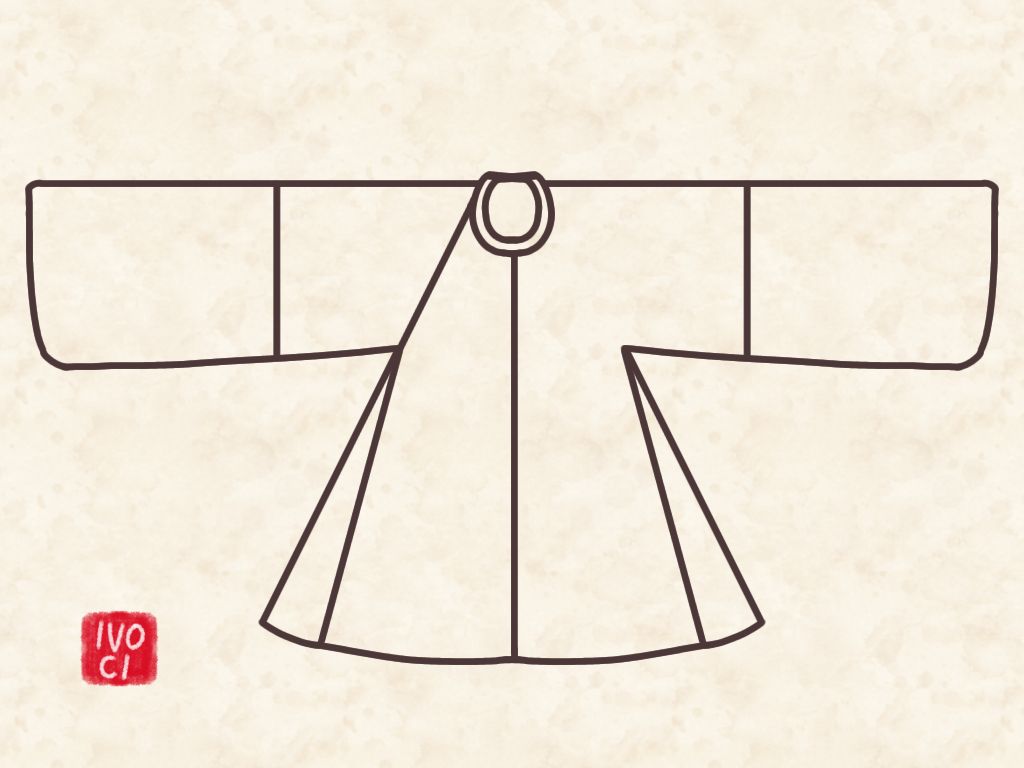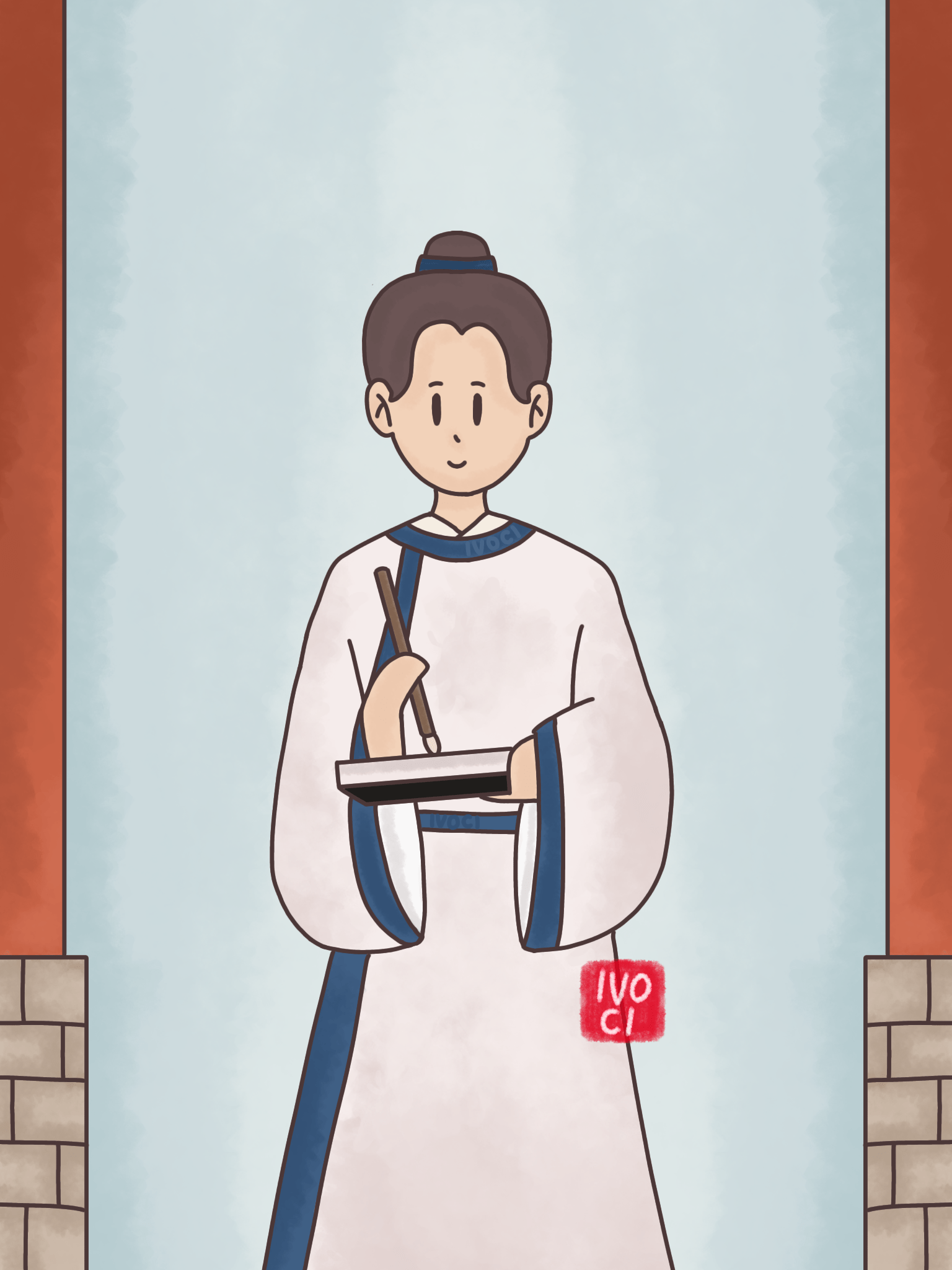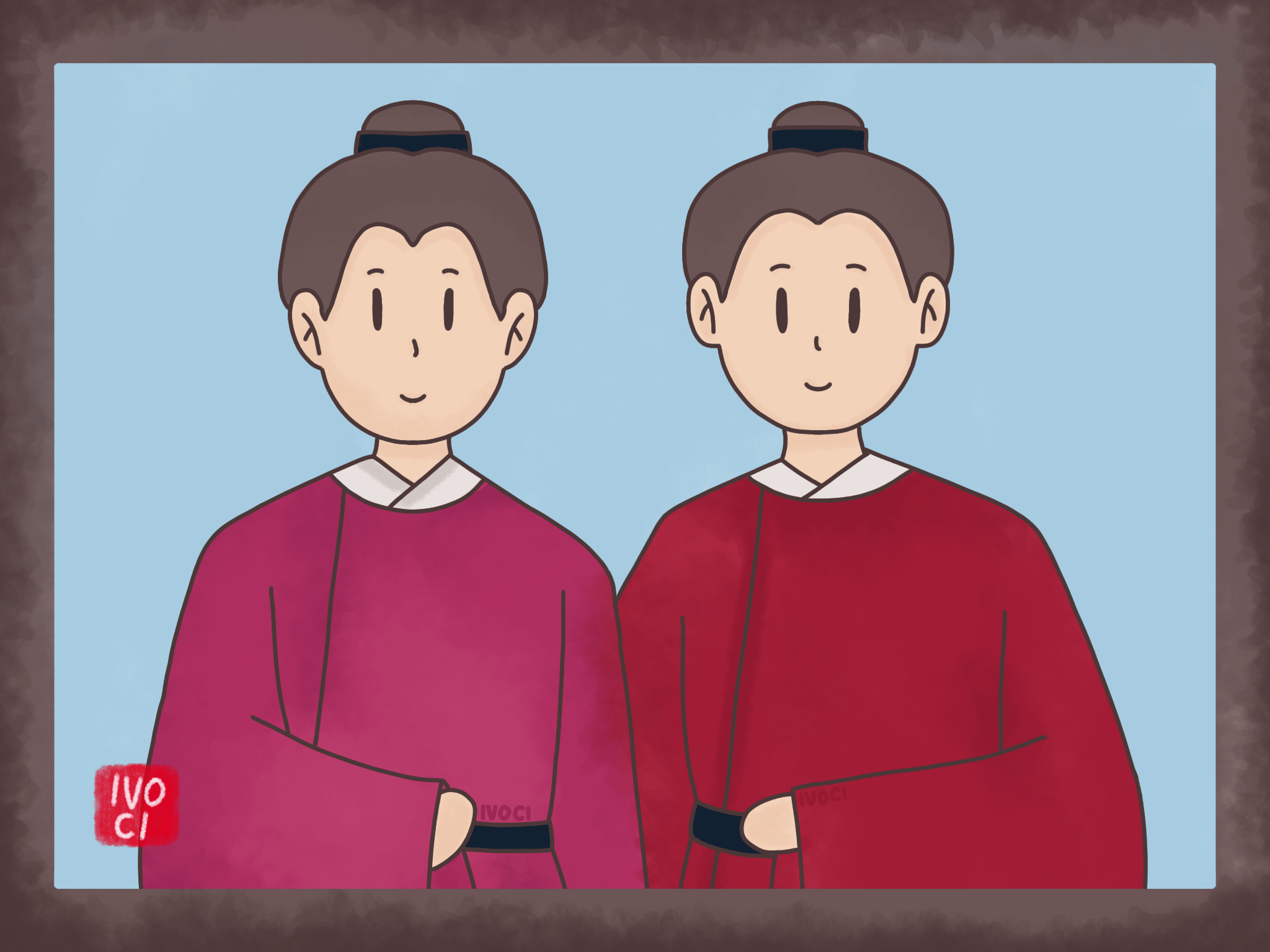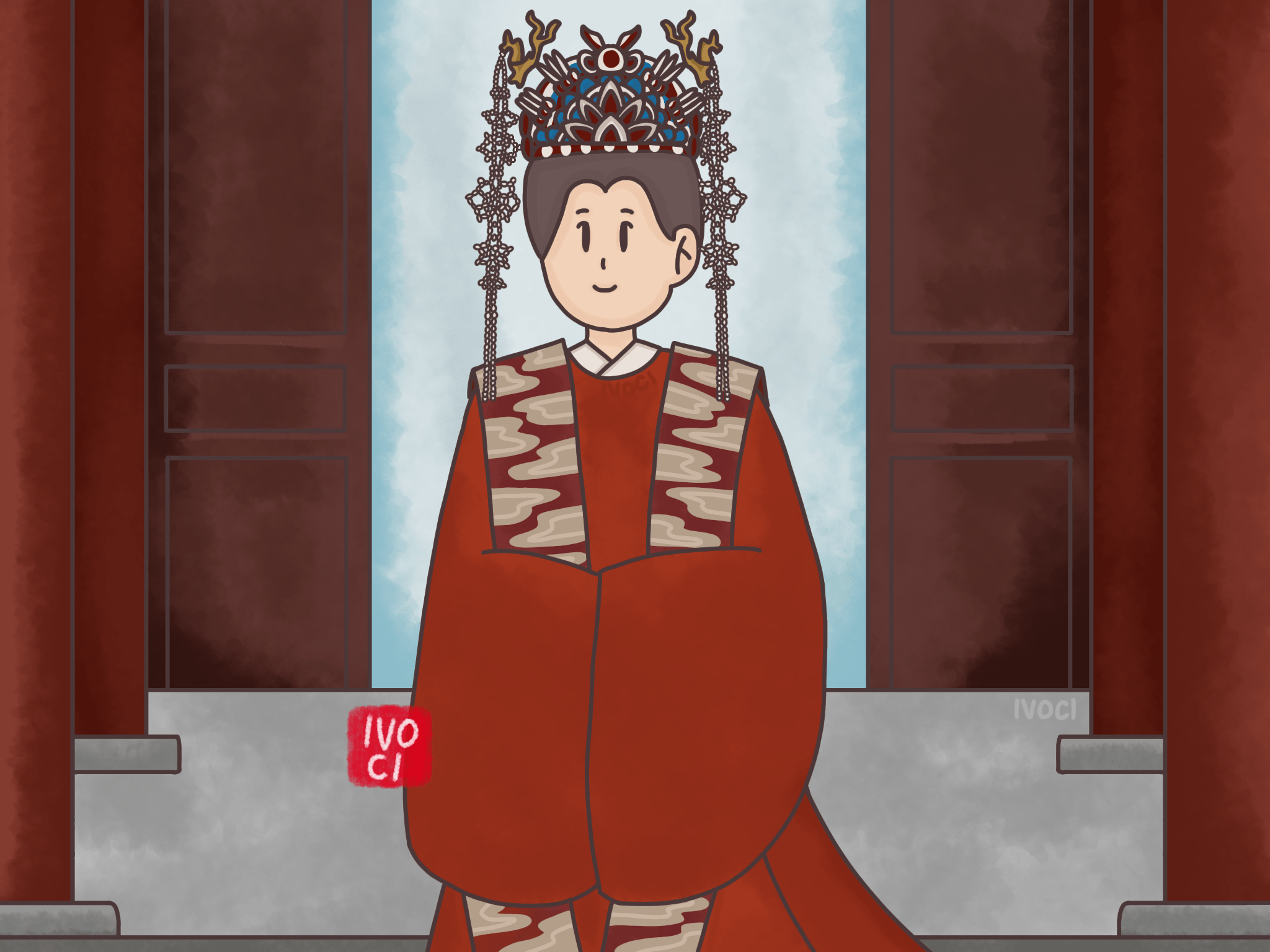Yuanlingpao (Chinese: 圆领袍 ; pinyin: yuán lǐng páo) is a form of an upper garment with a round collar.
Yuanlingpao is often also referred to as yuanlingshan (Chinese: 圆领衫 ; pinyin: yuán lǐng shān) or panlingpao (Chinese: 盘领袍 ; pinyin: pán lǐng páo) and when used as a robe it is called paofu (Chinese: 袍服 ; pinyin: páo fú).
Yuanlingpao is a formal dress usually worn by men, although it was also fashionable for women to wear it in some dynasties, such as during the Tang dynasty.
There are also special forms of yuanlingpao which are named based on their decoration and construction, for example, panling lanshan (Chinese: 盘领襕衫 ; pinyin: pán lǐng lán shān) or lanshan (Chinese: 襕衫 ; pinyin: lán shān).
History
Han dynasty
Yuanlingpao is a common form of clothing for the Hu people.
During the Eastern Han dynasty, some forms of hanfu began to be influenced by the Hufu of the Hu people, and clothing with yuanling (round) collars began to appear. However, during this period, yuanlingpao was usually used as underwear.
Wei, Jin, Northern and Southern dynasties
In the Northern and Southern dynasties, yuanlingpao began to be worn as outerwear under the influence of the ethnic minority (Wuhu) cultures that formed the national minority regimes during the Wei and Jin dynasties.
Also during this period, yuanlingpao started to be worn as a form of formal dress.
As such, these ethnic minorities also played an important role in laying the foundation for the popularity of the yuanlingpao used in subsequent dynasties.
Sui and Tang dynasties, Five Dynasties and Ten Kingdoms
The yuanlingpao, which was girded with a belt, became a distinctive form of dress for men and women of the Tang dynasty because it was fashionable for women to dress like men in this period.
In the Tang dynasty, it was also popular to use fabrics such as brocade to decorate the collars, sleeves, and front of yuanlingpao.
This customary form of clothing decoration is known as ‘partial dress decoration’ and was influenced by the Sogdians of Central Asia who had entered China during the Northern and Southern dynastic periods.
Influenced by foreign cultures, some yuanlingpao may have a cloth band decorated with a Central Asian loop that will run down the center of the robe as a partial form of decoration.
Song Dynasty
During the Song dynasty, the formal attire worn by Song court officials was yuanlingpao with long, loose-fitting, and wide sleeves.
The color of the yuanlingpao is also arranged by official rank.
The yuanlingpao had large overlapping areas held in place by wide strips of cloth, with leather belts, yudai (Chinese: 鱼袋 ; pinyin: yú dài), black leather boots or shoes, which were commonly worn by officials as accessories.
Liao dynasty
Khitan men wear the Khitan style yuanlingpao with a belt around the waist and trousers tucked into the boots.
The Khitan style yuanlingpao is different from that worn by the Han Chinese.
In terms of design and construction, the Khitan yuanlingpao has back and side slits, the side slits being found at the bottom of the robe.
The back slits made it easier for the horses to ride and protect their feet from the cold. Some of them have no gaps.
Their yuanlingpao is narrow-sleeved, closed on the left side, and unadorned.
Ming dynasty
In the Ming dynasty, the emperor restored the old dress system of the Tang and Song dynasties.
Yuanlingpao was also the most common form of clothing for men and women, officials, and royalty during the Ming dynasty.
Yuanlingpao in the Ming dynasty was usually worn as outerwear with tieli or zhishen.
The difference between the yuanlingpao of civilians and officials (and royalty) is the use of buzi (Chinese: 补子 ; pinyin: bǔ zi) and the material used in cloth.
Ming dynasty clothing is predominantly red. However, there are also strict color regulations and certain colors are used on yuanlingpao depending on the official’s rank.
During the Imperial Funeral, Ming officers wore the blue-gray yuanlingpao without the buzi, wujiaodai (Chinese: 乌角带 ; pinyin: wū jiǎo dài), and wushamao (Chinese: 乌纱帽 ; pinyin: wū shā mào).
Qing dynasty
During the Qing dynasty, the Manchu rulers enforced the tifayifu policy along with 10 exceptions, among those excluded were Han Chinese women who were allowed to continue wearing Ming-style hanfu and theatrical performers on stage.
While the qizhuang was used in the dominant spheres of society (ritual and official locations), hanfu continued to be used in the lesser spheres of society, such as in women’s quarters and theatres.
Wedding attire
The yuanlingpao of officials and/or noblewomen was also a form of wedding dress for commoners.
The groom wears the wushamao and yuanlingpao of the 9th-rank official robes.
The bride wears the fengguan xiapei and yuanlingpao that a noble lady wears.





Leave a Reply